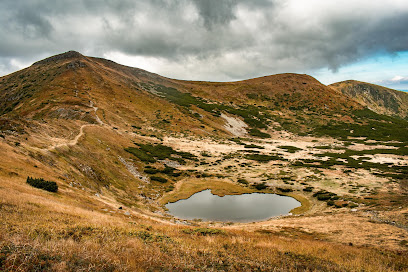
Majestic Peaks of Chornohora Range
Discover the majestic peaks and rich cultural heritage of the Chornohora Range, Ukraine's premier destination for outdoor adventures and breathtaking landscapes.
Nestled in the heart of the Carpathian Mountains, the Chornohora Range is a haven for nature enthusiasts and adventure seekers. This breathtaking region, known for its rolling hills and verdant landscapes, offers a perfect blend of natural beauty and cultural richness. The range includes the highest peaks in Ukraine, with Hoverla standing tall as the crown jewel at 2,061 meters above sea level. Visitors to Chornohora will find a variety of outdoor activities to indulge in, from hiking and mountain biking to bird watching and skiing. The trails here cater to both novice hikers and seasoned mountaineers, promising stunning vistas at every turn. The region's lush forests and alpine meadows are home to a diverse array of flora and fauna, making it a paradise for wildlife lovers. Beyond its natural wonders, Chornohora is steeped in local traditions and folklore. The mountain villages offer a glimpse into the traditional way of life, with wooden houses, ancient churches, and vibrant festivals. Visitors can enjoy authentic Ukrainian cuisine, listen to folk music, and even participate in local crafts. Whether you're seeking tranquility or adventure, Chornohora Range promises an unforgettable experience.
Local tips in Chornohora Range
- Visit in late spring or early autumn for the best weather and fewer crowds.
- Pack layers of clothing as mountain weather can be unpredictable, even in summer.
- Hire a local guide for a more enriching experience and to explore off-the-beaten-path trails.
- Try traditional Hutsul dishes like banosh and brynza cheese while visiting mountain villages.
- Carry cash as many of the remote areas may not accept credit cards.
Majestic Peaks of Chornohora Range
Nestled in the heart of the Carpathian Mountains, the Chornohora Range is a haven for nature enthusiasts and adventure seekers. This breathtaking region, known for its rolling hills and verdant landscapes, offers a perfect blend of natural beauty and cultural richness. The range includes the highest peaks in Ukraine, with Hoverla standing tall as the crown jewel at 2,061 meters above sea level. Visitors to Chornohora will find a variety of outdoor activities to indulge in, from hiking and mountain biking to bird watching and skiing. The trails here cater to both novice hikers and seasoned mountaineers, promising stunning vistas at every turn. The region's lush forests and alpine meadows are home to a diverse array of flora and fauna, making it a paradise for wildlife lovers. Beyond its natural wonders, Chornohora is steeped in local traditions and folklore. The mountain villages offer a glimpse into the traditional way of life, with wooden houses, ancient churches, and vibrant festivals. Visitors can enjoy authentic Ukrainian cuisine, listen to folk music, and even participate in local crafts. Whether you're seeking tranquility or adventure, Chornohora Range promises an unforgettable experience.
When is the best time to go to Chornohora Range?
Iconic landmarks you can’t miss
Chornohora
Explore the breathtaking Chornohora Mountain Range in Western Ukraine, a haven for hikers and nature lovers offering stunning vistas and rich biodiversity.
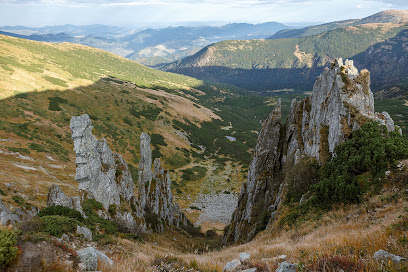
Chornohirsʹkyy Zapovidnyy Masyv
Discover the stunning natural beauty and adventure opportunities at Chornohirs'kyy Zapovidnyy Masyv, a mountain range in the picturesque Zakarpattia Oblast.
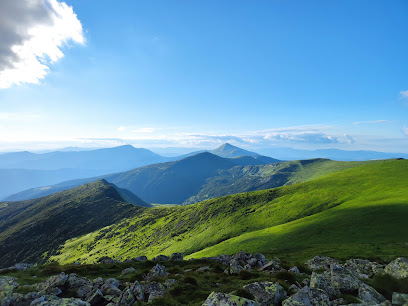
Unmissable attractions to see
Mezhyhirya Residence
Explore the majestic Mezhyhirya Residence, a historical museum in Kyiv Oblast, showcasing Ukraine's rich cultural heritage amidst stunning natural beauty.
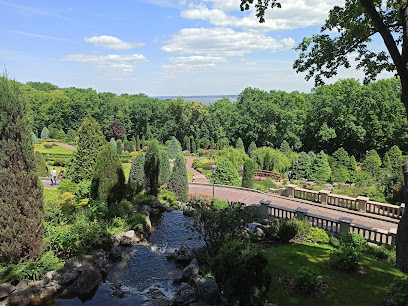
Askania-Nova
Explore the breathtaking Askania-Nova National Reserve in Kherson Oblast, a UNESCO Biosphere Reserve brimming with unique wildlife and stunning landscapes.

Museum of Water
Explore the significance of water through interactive exhibits at Kyiv's Museum of Water, a unique cultural experience for all ages.
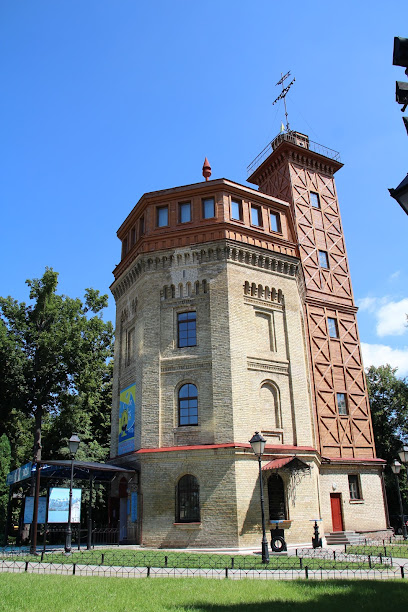
Museum of Jellyfish
Explore the captivating Museum of Jellyfish in Kyiv, a mesmerizing journey through the beauty of marine life and jellyfish wonders.
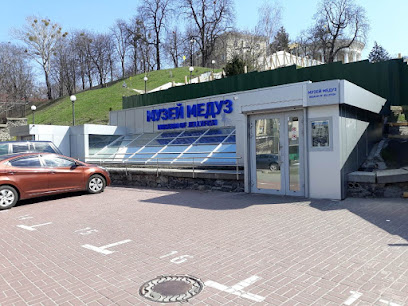
Smotrytsky Canyon
Experience the natural beauty of Smotrytsky Canyon, a breathtaking scenic spot perfect for adventure, relaxation, and exploration in Ukraine.
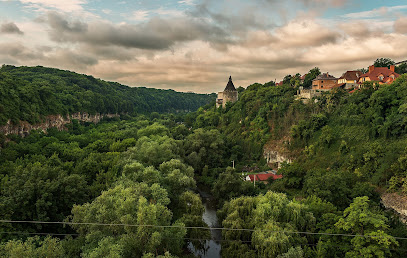
Ski Tourist Complex Migovo
Experience exhilarating skiing and cozy accommodations at Ski Tourist Complex Migovo, a winter paradise nestled in the Carpathian Mountains.
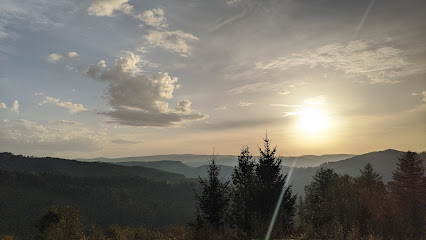
Lookout Tower
Experience breathtaking panoramic views of the Carpathian Mountains at the Lookout Tower in Verkhovyna, a must-visit for nature lovers and photographers.
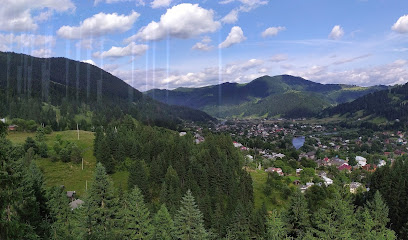
Hora Shpytsi
Experience the breathtaking beauty of Hora Shpytsi, a stunning mountain peak in Ukraine's Ivano-Frankivsk Oblast, perfect for nature lovers and adventurers.

Chornohora
Experience the breathtaking beauty of Chornohora, the highest mountain range in Western Ukraine, ideal for hiking and nature exploration.
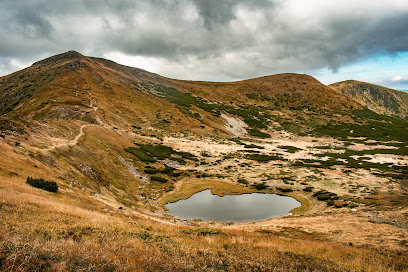
Daraba Raftynh Na Cheremoshi
Explore thrilling white-water rafting on the Cheremosh River, surrounded by the breathtaking beauty of the Carpathian Mountains in Ukraine.
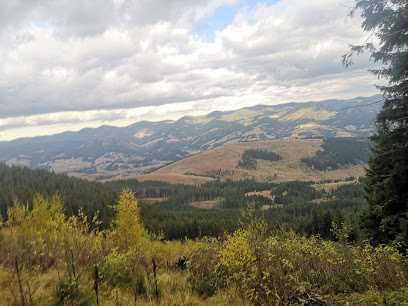
Chornohirsʹkyy Zapovidnyy Masyv
Discover the breathtaking landscapes and rich biodiversity of Chornohirsʹkyy Zapovidnyy Masyv, a natural gem in Zakarpattia Oblast.
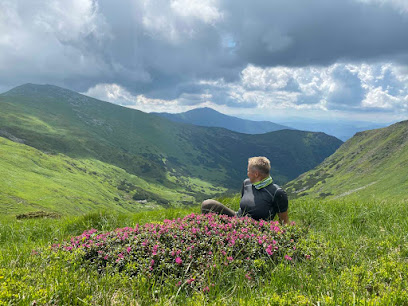
Hora Koretyvna
Explore the captivating beauty and rich cultural heritage of Hora Koretyvna in Ivano-Frankivsk Oblast, a top destination for nature lovers and adventurers.
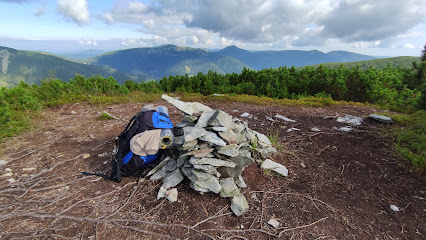
Local Phrases about Chornohora Range
-
- HelloПривіт
[pryvit] - GoodbyeДо побачення
[do pobachennya] - YesТак
[tak] - NoНі
[ni] - Please/You're welcomeБудь ласка
[bud laska] - Thank youДякую
[dyakuyu] - Excuse me/SorryВибачте
[vybachte] - How are you?Як справи?
[yak spravy?] - Fine. And you?Добре. А ви?
[dobre. A vy?] - Do you speak English?Ви говорите англійською?
[vy hovoryte anhliysʹkoyu?] - I don't understandЯ не розумію
[ya ne rozumiyu]
- HelloПривіт
-
- I'd like to see the menu, pleaseЯ би хотів подивитися меню, будь ласка
[ya bi hotiv podyvytysya menyoo, bud laska] - I don't eat meatЯ не їм м'ясо
[ya ne yim m'yaso] - Cheers!Будьмо!
[budʹmo!] - I would like to pay, pleaseЯ би хотів заплатити, будь ласка
[ya bi hotiv zaplatyty, bud laska]
- I'd like to see the menu, pleaseЯ би хотів подивитися меню, будь ласка
-
- Help!Допоможіть!
[dopomozhitʹ!] - Go away!Піди геть!
[pidy hetʹ!] - Call the Police!Викличте поліцію!
[vyklychte politsiyu!] - Call a doctor!Викличте лікаря!
[vyklychte likarya!] - I'm lostЯ загубився
[ya zahubyvsya] - I'm illЯ хворий
[ya khvoryy]
- Help!Допоможіть!
-
- I'd like to buy...Я би хотів купити...
[ya bi hotiv kupyty...] - I'm just lookingЯ просто дивлюся
[ya prosto dyvlyusya] - How much is it?Скільки це коштує?
[skilʹky tse koshtuye?] - That's too expensiveЦе занадто дорого
[tse zanadto doroho] - Can you lower the price?Чи можете ви знизити ціну?
[chy mozhete vy znyzyty tsinu?]
- I'd like to buy...Я би хотів купити...
-
- What time is it?Яка година?
[yaka hodyna?] - It's one o'clockОдна година
[odna hodyna] - Half past (10)Половина (десятої)
[polovyna (desyatoyi)] - MorningРанок
[ranok] - AfternoonДень
[denʹ] - EveningВечір
[vechir] - YesterdayВчора
[vchora] - TodayСьогодні
[sohodni] - TomorrowЗавтра
[zavtra] - 1Один
[odyn] - 2Два
[dva] - 3Три
[try] - 4Чотири
[chotyry] - 5П'ять
[pyatʹ] - 6Шість
[shistʹ] - 7Сім
[sim] - 8Вісім
[visim] - 9Дев'ять
[dev'yatʹ] - 10Десять
[desyatʹ]
- What time is it?Яка година?
-
- Where's a/the...?Де є/знаходиться...?
[de ye/znakhodytsya...?] - What's the address?Яка адреса?
[yaka adresa?] - Can you show me (on the map)?Чи можете ви мені показати (на мапі)?
[chy mozhete vy meni pokazaty (na mapi)?] - When's the next (bus)?Коли наступний (автобус)?
[koly nastupnyy (avtobus)?] - A ticket (to ....)Квиток (до ...)
[kvitok (do ...)]
- Where's a/the...?Де є/знаходиться...?
History of Chornohora Range
-
The Chornohora Range, part of the Carpathian Mountains, has been inhabited since ancient times. Archaeological findings suggest that various tribes, including the Thracians and Dacians, lived in these mountains. These early inhabitants relied on the region's rich natural resources for sustenance and used the mountains for shelter and defense.
-
During the medieval period, the Chornohora Range was part of the Principality of Halych-Volhynia. This principality was a significant center of political power and culture in Eastern Europe from the 12th to the 14th centuries. The mountainous terrain served as both a natural fortress and a strategic point for trade routes connecting different regions.
-
In the 16th and 17th centuries, the Chornohora Range witnessed raids and incursions by the Ottoman Empire. These conflicts often involved local Cossack forces who defended the region. The rugged terrain of the mountains provided a natural barrier against the invaders, and local folklore is rich with tales of heroic resistance.
-
The late 18th and 19th centuries saw the Chornohora Range come under Austro-Hungarian control. This period was marked by increased exploration and mapping of the Carpathians. The Austro-Hungarian administration promoted scientific expeditions, which helped document the region's unique flora and fauna. Additionally, mountain tourism began to develop, laying the groundwork for the modern hiking trails that exist today.
-
The Chornohora Range played a strategic role during both World War I and World War II. The mountains were the scene of several battles and military campaigns due to their strategic importance. During World War II, the region was part of significant military operations involving the Soviet, German, and Hungarian forces. The remnants of bunkers and other military structures can still be found in the mountains, serving as somber reminders of these tumultuous times.
-
After World War II, the Chornohora Range became part of the Soviet Union. During the Soviet era, there were efforts to develop the region's infrastructure, including roads and tourist facilities. At the same time, there were significant conservation efforts to protect the natural environment. The Chornohora Range is now part of the Carpathian Biosphere Reserve, recognized for its ecological and cultural significance.
-
In contemporary Ukraine, the Chornohora Range is a popular destination for tourists, hikers, and nature enthusiasts. The region is celebrated for its cultural heritage, including traditional Hutsul music, dance, and crafts. The mountains are also home to numerous festivals and cultural events that attract visitors from around the world. Local communities continue to preserve their unique customs and way of life, offering a rich cultural tapestry for visitors to explore.
Chornohora Range Essentials
-
Chornohora Range is located in the Carpathian Mountains of western Ukraine. The nearest major city is Ivano-Frankivsk, which has a regional airport with flights from Kyiv and other Ukrainian cities. From Ivano-Frankivsk, you can take a train or bus to the town of Vorokhta, which is a common starting point for trips into the Chornohora Range. Another option is to fly into Lviv, a larger city with more international connections, and then take a train or bus to Vorokhta. The journey from Lviv typically takes around 4-6 hours by road or rail.
-
Within the Chornohora Range, public transportation options include buses and minibuses (marshrutkas) that connect smaller villages and trailheads. Taxis are also available but can be more expensive. For exploring the mountains and remote areas, renting a car or hiring a local guide can be more convenient. Many trails are only accessible by foot or mountain bike, so be prepared for some hiking. In winter, some areas are accessible by snowmobile or ski.
-
The official currency in Ukraine is the Ukrainian Hryvnia (UAH). While credit cards are accepted in larger towns and cities, cash is essential in rural and remote areas. ATMs are available in towns like Vorokhta, but it's advisable to withdraw enough cash before heading into the mountains. Carry small denominations for easier transactions, especially in local markets and with small vendors.
-
Chornohora Range is generally safe for tourists, but standard precautions should be taken. Avoid isolated areas at night and keep an eye on your belongings in crowded places. Be aware of your surroundings and keep your valuables secure. There are no specific high-crime areas targeting tourists, but staying vigilant is always a good practice. In the mountains, watch out for sudden weather changes and ensure you're adequately prepared for outdoor activities.
-
In case of emergency, dial 112 for immediate assistance. Medical facilities are available in larger towns like Vorokhta, but may be limited in remote areas. It's highly recommended to have travel insurance that covers medical emergencies and evacuation. For minor health issues, there are pharmacies in the town where you can purchase over-the-counter medications. Make sure to carry a first aid kit and be prepared for outdoor emergencies, especially when hiking.
-
Fashion: Do wear comfortable and weather-appropriate clothing, especially for outdoor activities. Avoid overly revealing outfits, particularly in rural areas. Religion: Do respect local customs and traditions. When visiting religious sites, dress modestly and cover your head if required. Public Transport: Do be respectful and give up your seat to elderly passengers. Don't eat or drink on public transport. Greetings: Do greet people with a handshake and a smile. A slight nod of the head is also considered polite. Eating & Drinking: Do try local delicacies and accept food offerings graciously. Don't refuse hospitality, as it is considered impolite.
-
To experience Chornohora Range like a local, visit the local markets where you can buy fresh produce and traditional Ukrainian goods. Engage with locals, as they are often friendly and willing to share stories about the region's history and culture. Don't miss the chance to try local dishes such as banosh and varenyky. For a unique experience, participate in local festivals and traditional celebrations. Hiking with a local guide can provide deeper insights into the natural and cultural heritage of the area.
Nearby Cities to Chornohora Range
-
Things To Do in Baia Mare
-
Things To Do in Chernivtsi
-
Things To Do in Satu Mare
-
Things To Do in Mukachevo
-
Things To Do in Suceava
-
Things To Do in Cluj-Napoca
-
Things To Do in Uzhhorod
-
Things To Do in Ternopil
-
Things To Do in Lviv
-
Things To Do in Nyiregyhaza
-
Things To Do in Sighisoara
-
Things To Do in Debrecen
-
Things To Do in Khmelnytskyi
-
Things To Do in Košice
-
Things To Do in Prešov









